- Write by:
-
Wednesday, July 14, 2021 - 21:18:54
-
389 Visit
-
Print

Mining News Pro - Gemfields called on governance bodies, mining organizations, industry observers and host governments to adopt the ‘G-Factor for Natural Resources,’ a new measure promoting greater transparency regarding the level of natural resource wealth shared with the governments of host countries.
The London-based company, which has operations in Mozambique and Zambia, and holds controlling interests in licenses in Ethiopia and Madagascar, explained in a media statement that the G-Factor is intended to be an uncomplicated indicator of the percentage of a natural resource company’s revenue that is paid to the host country government in primary and direct taxes, plus – where the host government is a shareholder – dividends.
The miner suggests that each company or multinational engaged primarily in the extraction and sale of natural resources calculates its own G-Factor and makes it public for the parent company itself and each operating subsidiary.
The G-Factor for Natural Resources takes its name from the ‘g’s’ in ‘government,’ ‘governance’ and ‘good practice.’
“In an era witnessing significant strides in transparency and governance, and where extensive reporting on so many facets of corporate activity is already required in the annual reports of public companies, it is surprising that practical parameters allowing more direct insight into, and comparison of, the sharing of natural resource wealth still elude us,” Sean Gilbertson, Gemfields’ CEO, said in the press brief. “We invite collaboration, input and support for the adoption of the ‘G-Factor for Natural Resources’ as a step forward. We hope it will be voluntarily adopted by other companies, insisted upon by host countries and incorporated into projects such as EITI.”
Gilbertson explained that the G-Factor is expressed as a percentage and is calculated by adding up the total mineral royalty paid by the reporting company to the host country government during the relevant period; plus the total corporate tax paid to the host country government during the same period; plus the dividends paid by the reporting company to the host country government during the period if the host country government is a shareholder in the reporting company, and all of this divided by the total revenues of the reporting company during the period.
The formula looks like this:
Ap + Bp + Cp / Dp
where:
A = total mineral royalty (tax on revenue) paid to the host country government
B = total corporate tax (tax on profit) paid to the host country government
C = the dividends paid to the host country government (where the host country government is a shareholder in the reporting company)
D = total revenues of the reporting company
p = the relevant period, typically calculated for each of (i) the prior year; (ii) the preceding 5 years and (iii) the preceding 10 years
Gemfields suggests using the sums actually paid during the period, rather than the sums accrued or falling due during the period, for the purposes of A, B and C.
Gilbertson recognized that no measure of this type is perfect and, therefore, the G-Factor should be interpreted as a ‘rule-of-thumb,’ understanding that it may not be suited to every situation.
He also admitted that there are additional and indirect taxes that are not included in the G-Factor for Natural Resources and which further increase the contribution made to host nations by natural resource companies. Such taxes include area/surface charges, social security contributions, taxation on the salaries of employees, import and export duties, VAT, among others.
When it comes to comparing company to company using the new measure, the executive acknowledged that the variety and variations in natural resource deposits, types and occurrences lessen the ability to make direct comparisons.
Regardless of the caveats of the tool and to lead by example, Gemfields calculated the G-Factor for its two main operations, namely, the Montepuez mine in Mozambique, which is the world’s richest known ruby deposit and the only asset that generated a profit for the company last year, and the Kagem emerald mine in Zambia, which is responsible for approximately 25% of the world’s emerald supply.
Gemfields has made headlines two weeks in a row after a sudden, 10%-hike in its share price on July 9, which was attributed to “non-disclosable unpublished price-sensitive information”.
The firm, which returned to the London Stock Exchange’s market for juniors last year, revealed it expects to announce sales of $95 million for the first half of 2021, up 533% from the same period in 2020.
Short Link:
https://www.miningnews.ir/En/News/614986
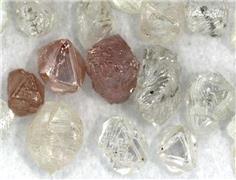
Irish explorer Karelian Diamond Resources (AIM: KDR) said on Tuesday its search for precious stones in Finland has taken ...
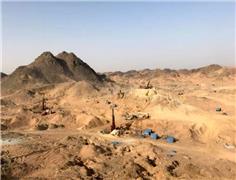
Chinese coal prices are likely to keep falling until the start of the peak summer season, suppressing imports of the ...
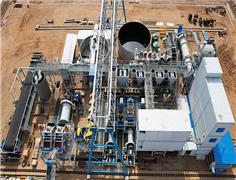
NextSource Materials has submitted an application to build a downstream battery anode facility (BAF) to process graphite ...
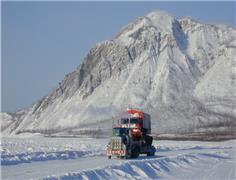
An unusually warm winter in Canada this year has delayed the opening of a 400-kilometer (250-mile) ice road that is ...

Russia will regularly buy diamonds from sanctions-hit producer Alrosa through a state fund, the finance ministry said on ...
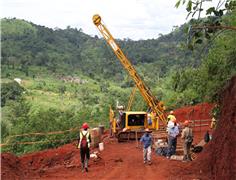
Ivanhoe Electric (NYSE American: IE) (TSX: IE) terest in the Samapleu-Grata nickel-copper project in Côte d’Ivoire after ...
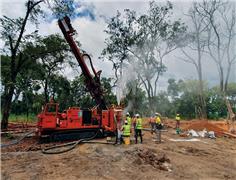
Awalé Resources (TSXV: ARIC) stock soared on Monday after the Newmont-backed gold explorer reported outstanding assay ...
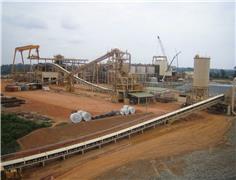
Newmont Corp. has kicked off the sale of its Akyem gold mine in Ghana, which is attracting interest from potential ...

Antwerp’s diamond dealers face long and costly delays following an EU ban on Russian-origin diamonds that took effect on ...
No comments have been posted yet ...